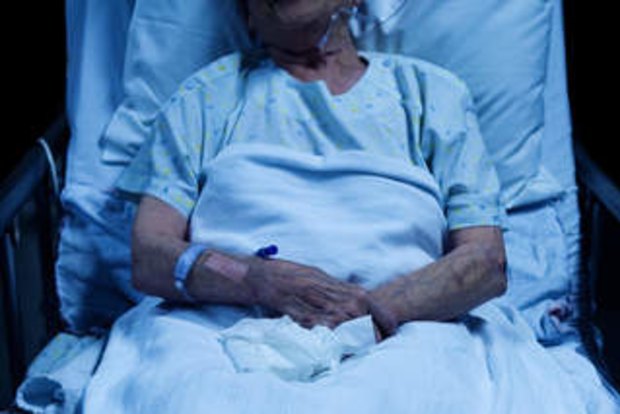Bonchek Adams Controversy a Tweeting Shame
Now is the time for informed debate on patient choices.
The Lisa Bonchek Adams tweet story is a morality tale, but not one about patient choices at the end of life. Bonchek Adams is a blogger and tweeter living with metastatic breast cancer. Her condition can be treated but not cured. A woman in her 40s with three children at home, she has pursued medical care that both extends her life and improves its quality.
She has been living with her diagnosis for years and while the condition will likely end her life, her final days could be months or years away. Late-stage cancer is tricky, and the progression of each patient’s disease is different.
With the time left to her, Bonchek Adams has chosen to do ‘'as much as I can for as long as I can’‘.
She is one of a growing group of patients using social media to share their experience of breast cancer diagnosis, treatments and – for those who do not recover – their last weeks and months on earth.
Nothing controversial. Or so you would think. For some patients, sharing their story with followers, and receiving support in return, reduces the isolation and shame that can accompany the illness. This is especially the case, as writer Zeynep Tufecki put it, when their journey does not ‘'fit into happy narratives of survivors showered in pink paraphernalia’‘.
For followers who are not comfortable with this way of coping, there is no compulsion to participate. But this was not the decision made by husband and wife columnists Emma and Bill Keller. In a piece in The Guardian, Emma Keller uses Bonchek Adams' tweets as a jumping off point for ruminations about the rectitude of ‘'dying out loud’‘.
In his regular column in The New York Times four days later Bill used Bonchek Adams' medical situation (she was in hospital for radiation treatment and pain caused by tumours on her spine) as a hook to discuss the wisdom of ‘'heroic measures that may or may not prolong life’‘.
The social media backlash was fast and furious. In subsequent days, it was joined by bloggers and columnists who expanded on the myriad ways the Kellers got it wrong. In response, The Guardian removed Emma’s comments ‘'pending investigation’‘, and Times editor Margaret Sullivan made rare and pointed comments about factual errors and tonal problems with Bill’s piece.
Both journalists have a case to answer. Emma Keller exchanged emails with Bonchek Adams, and quoted direct messages she was sent on Twitter, without disclosing to Bonchek Adams she was writing a column. Both Emma and Bill got important facts wrong, the most critical of which was their presumption that Lisa is near death.
As an academic who has followed Lisa for a year says: ‘'Lisa Adams is not prolonging her last few weeks of life with a cascade of interventions. She’s getting treatment for pain in her bones – the type of tumours that won’t kill her till they spread elsewhere, which may be soon, or may be years away.’'
Or as Lisa herself reprimanded Bill from her hospital bed: ‘’@nytkeller The main thing is that I am alive. Do not write me off and make statements about how my life ends TIL IT DOES, SIR.‘’
Among the many regrettable aspects of this incident is the loss of the opportunity to have a conversation about patient choices at the end of life that Bill Keller clearly wanted to have, but his and his wife’s misuse of Bonchek Adams' story cut short.
Across the Western world, populations are ageing. Enormous amounts of resources are spent on aggressive and invasive care of elderly patients in the final months of their lives. Most patients in dialysis programs and intensive-care units are aged over 70 and many are already burdened with serious chronic illness.
When patients are still able to make decisions for themselves, they may not realise a current illness heralds the end of life. When they lose the capacity to decide for themselves, their families will determine whether each additional intervention is worth the cost, or only postpones the inevitable.
Religious values and defensive medical behaviour can shape the choices doctors make, but families racked by grief, in dispute with one another, or suspicious of the system, also block compassionate care. The result, says one doctor, is a loved one condemned to ‘'die in isolation, pain and fear’‘ in hospitals and intensive-care units rather than comfortably at home.
Part of the solution is advanced care planning, which allows patients to clarify their values by discussing them with their family and doctor. A written plan makes sure their wishes are understood and designates a trusted person to carry them out.
The Bonchek Adams story is a timely reminder of how profoundly technology has reshaped our world. It was never acceptable for journalists to mislead sources, make sloppy errors of fact or misappropriate someone’s personal tragedy. But the web’s capacity to connect readers to one another enables knowledge of such professional misdemeanours to be shared, while collective outrage works the levers of power to ensure violators are called to account.
Sadly, advancing medical technology can disempower the average punter at the end of life. She must make her wishes known to avoid a cascade of distressing medical interventions that do not save life but merely prolong death.


